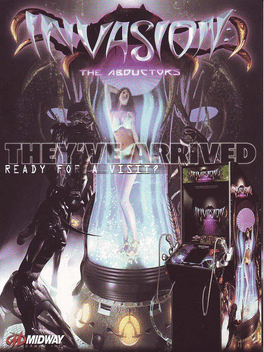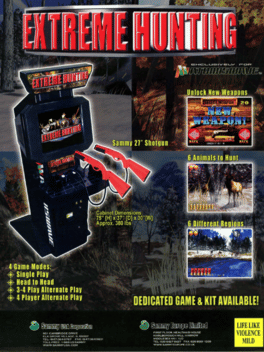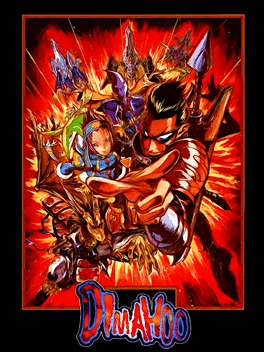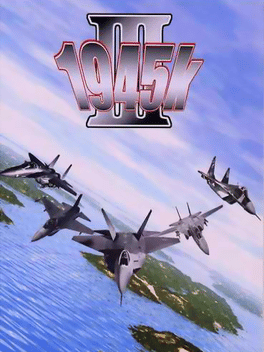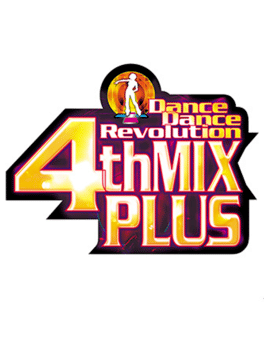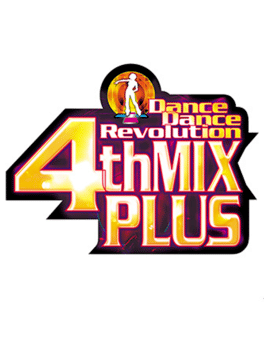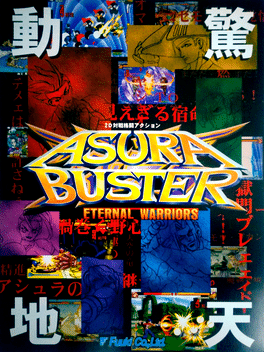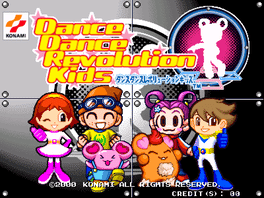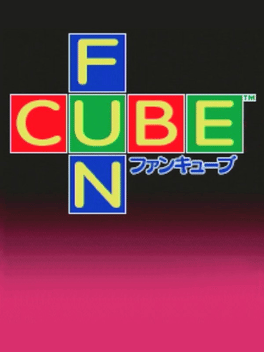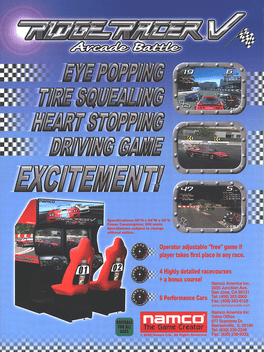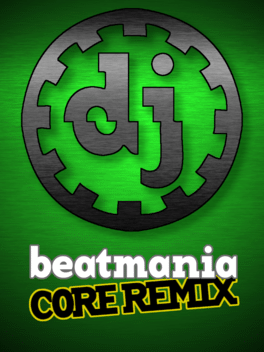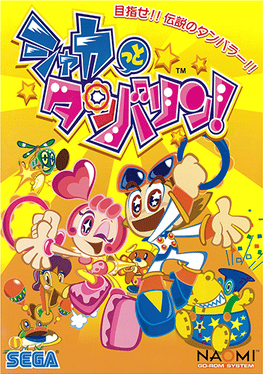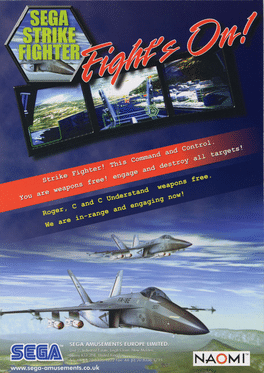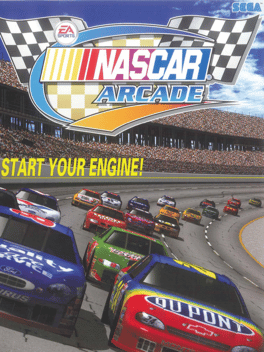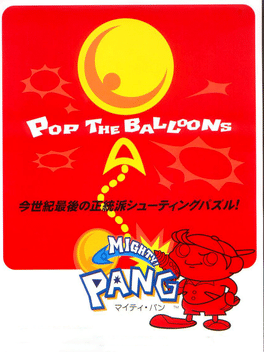New Arcade Games - Page 42
-
Invasion - The Abductors
2000
There was a time, thousands of years ago when 'visitors' arrived on earth and chose humans for a great experiment. They gave humans the ability to learn in order to watch them evolve and expand their minds beyond their primitive means. Now the experiment is complete and the 'visitors' have returned to harvest their crop. At this moment, their great ships are arriving at major cities around the globe preparing to conquer and claim what is rightfully theirs... the human race. To stop the invasion you must complete 4 separate missions by defeating the invading aliens that are abducting and mutating humans, snatching monuments and creating havoc in the world. The fate of the plant is in your hands! -
Brave Blade
2000
-
Extreme Hunting
2000
Extreme Hunting
2000
A 3D hunting game where players use pump-action rifles to shoot on-screen animals including deer, moose, elk and bears. The game has three selectable weapons: rifle, shotgun and power bow. -
Golden Tee 2K
2000
Golden Tee 2K
2000
Golden Tee Golf (also known as Golden Tee) is a golf arcade game series by Incredible Technologies. -
Dimahoo
2000
Dimahoo
2000
In this impressive blend of an overhead shoot'em up with RPG characteristics, you must help a group of mystic bounty hunters save the earth against the evil Gobligan Underground Empire. Features excellent 2-D graphics and sound, awesome character & enemy artwork designs, a level-up and elemental-based weapon system and LOTS of hidden items! -
1945k III
2000
1945k III
2000
star 5.91945kIII is a scrolling shooter arcade video game. It was developed and published by the Korean developer Oriental Software in 2000. In this game, the player controls a fighter and has to shoot as many enemy fighters as possible while the stage is moving forward. There are many bonuses and new weapons available. The gameplay is reminiscent of several 1980s scrolling shooter arcade video games, and is therefore considered a retro game. -
Dance Dance Revolution Solo 4thMix Plus
2000
Dance Dance Revolution Solo 4thMix and Dance Dance Revolution Solo 4thMix Plus were released concurrently with 4thMix and 4thMix Plus respectively, designed for use with Solo cabinets. The changes in the actual game engine are few, but significant. The 4 and 6-panel modes are offered instead of the usual options, and the chubby arrows of the Solo series also appear. Multi-player Mode from the Solo series is not present in either game. An ALL MUSIC MODE feature is included for Dance Dance Revolution 4thMix Plus where players have access to all songs in the game instead of picking music genres. -
Dance Dance Revolution 4thMix Plus
2000
Dance Dance Revolution 4thMix Plus is an upgrade of 4thMix, released on December 28, 2000. It adds fourteen new songs not seen in any previous DDR version. Several older songs have received new Maniac step sets, with the old steps being moved to "Maniac-S" (for Single) or "Maniac-D" (for Double). The new steps are generally much harder than before, and are used as the default Maniac steps in Dance Dance Revolution 5thMix. The old step sets have been restored for songs included in DDRMAX2 Dance Dance Revolution 7thMix, and certain 4thMix Plus steps return as Challenge steps in Dance Dance Revolution Extreme. An all music mode feature is included for Dance Dance Revolution 4thMix Plus where players have access to all songs in the game instead of picking music genres -
Asura Buster: Eternal Warriors
2000
Three years have passed since the events of Asura Blade and the post-apocalyptic world has been in a state of calm and peace after the deaths of S. Geist and Curfue, both of whom were killed by Yashaou from within the last fight of the battle, but now, a new threat has arisen as the sudden and shocking sinking of a continent has placed the post-apocalyptic world into a state of chaos and destruction once more. A few of the fighters from the Asura Blade incident of three years ago, along with a few new warriors will find themselves being caught up from within a dark and shrouded conspiracy as a mysterious yet malevolent king aspires to become the new supreme lord of the world. -
DanceDanceRevolution Kids
2000
In December 2000, Konami released Dance Dance Revolution KIDS, which had a new cabinet and game specifically made for a younger audience. The game was never released outside of Japan. Today, very few of these cabinets are left. -
Big Buck Hunter
2000
-
Fun Cube
2000
-
Anime Champ
2000
Anime Champ
2000
Anime Champ is an arcade Bishi Bashi game released on 2000 exclusively in Japan. It was developed and published by Konami. Players play a variety of mini games from five anime from the 60s and 70s. -
Tetris: The Absolute - The Grand Master 2 Plus
2000
An updated version of Tetris The Absolute The Grand Master 2 released shortly after the original, which adds the TGM+ and T.A. Death modes, and also increases Master mode's GM requirements. -
Ridge Racer V: Arcade Battle
2000
Ridge Racer V: Arcade Battle is a racing arcade game developed by Namco and released in 2000. It runs on Namco's System 246 hardware and is the ninth installment in the Ridge Racer series. The game is inspired by Ridge Racer V for the Sony PlayStation 2, which was released earlier the same year. In this version, two players can race head-to-head, a reduction from the eight-player support found in Ridge Racer 2 and Rave Racer. Players can choose from six new cars and race on one of five new tracks: "Park Town," "Outer Pass," "Above the City," "Bayside Line," and "Sunny Beach." The "Sunny Beach" track is a shorter version of the original Ridge Racer track, featuring updated graphics. To activate "Time Trial" mode, players must hold down the "View Change Button" (introduced in Rave Racer) after inserting a coin and keep it pressed until they have selected their car. Once activated, "T.T" will appear on the track selection screen. Ridge Racer V: Arcade Battle marks the final arcade release in the Ridge Racer series. -
Beatmania Core Remix
2000
Beatmania Core Remix
2000
Beatmania Core Remix is a rhythm game developed by Konami. It is the ninth game in the beatmania series and is part of the BEMANI franchise. The game is played with a controller with one turn table and 5 keys, three white and two black. On the screen you will see bars moving from the top to bottom in columns representing each of the keys and the turntable. When the bars reach the judgement line it is time to scratch. The game focuses on remixing the songs from the first two game, where every song features a normal and remixed version. it is the first game that lets you change the modifiers from the music select screen, which becomes standard later in the series, but only only when the game is in event mode. Since the game focuses on remixes no songs from clubMIX was brought over. Instead 17 songs from beatmania and beatmania 2ndMIX was included and remixed. An additional 7 brand new songs was also included for a total of 41 songs. -
Shakatto Tambourine!
2000
Shakatto Tambourine!
2000
A spin-off of Samba de Amigo featuring a tambourine controller and primarily J-Pop tracklist. -
Sega Strike Fighter
2000
-
NASCAR Arcade
2000
NASCAR Arcade
2000
NASCAR Arcade is a stock car racing game and the first NASCAR game to be made for the arcades. It's officially licensed through Electronic Arts (who had the license at the time) and is based on the 1999 Winston Cup series. There are three different race tracks to choose from each with a different difficulty level: Talladega Superspeedway, Richmond International Raceway and Watkins Glen International. A secret Team SEGA track exist too but it's not made available until 700 races have been made on the machine. Before racing the player can choose from real life cars and drivers that all have different strengths and weaknesses. The cars included are Pontiac Grand Prix, Ford Taurus, Chevrolet Monte Carlo and Pontiac Firebird while there are more than 30 drivers to choose from. The game can be played from a first person perspective or several different third person views. It's possible to choose automatic or manual transmission. The objective of the game is to race against the clock and reach a top three position and th -
Mighty! Pang
2000
Mighty! Pang
2000
Mighty! Pang is an arcade-style action game where players shoot wires to pop balloons that bounce around the screen. Balloons split into smaller ones when hit, and disappear when reduced to their smallest size. Touching a balloon results in losing a life. The game features three modes: Tour Mode: Clear each stage by eliminating all balloons while traveling through different locations. Panic Mode: Survive as long as possible against an endless wave of balloons. Expert Mode: Tackle challenging stages designed for experienced players.
